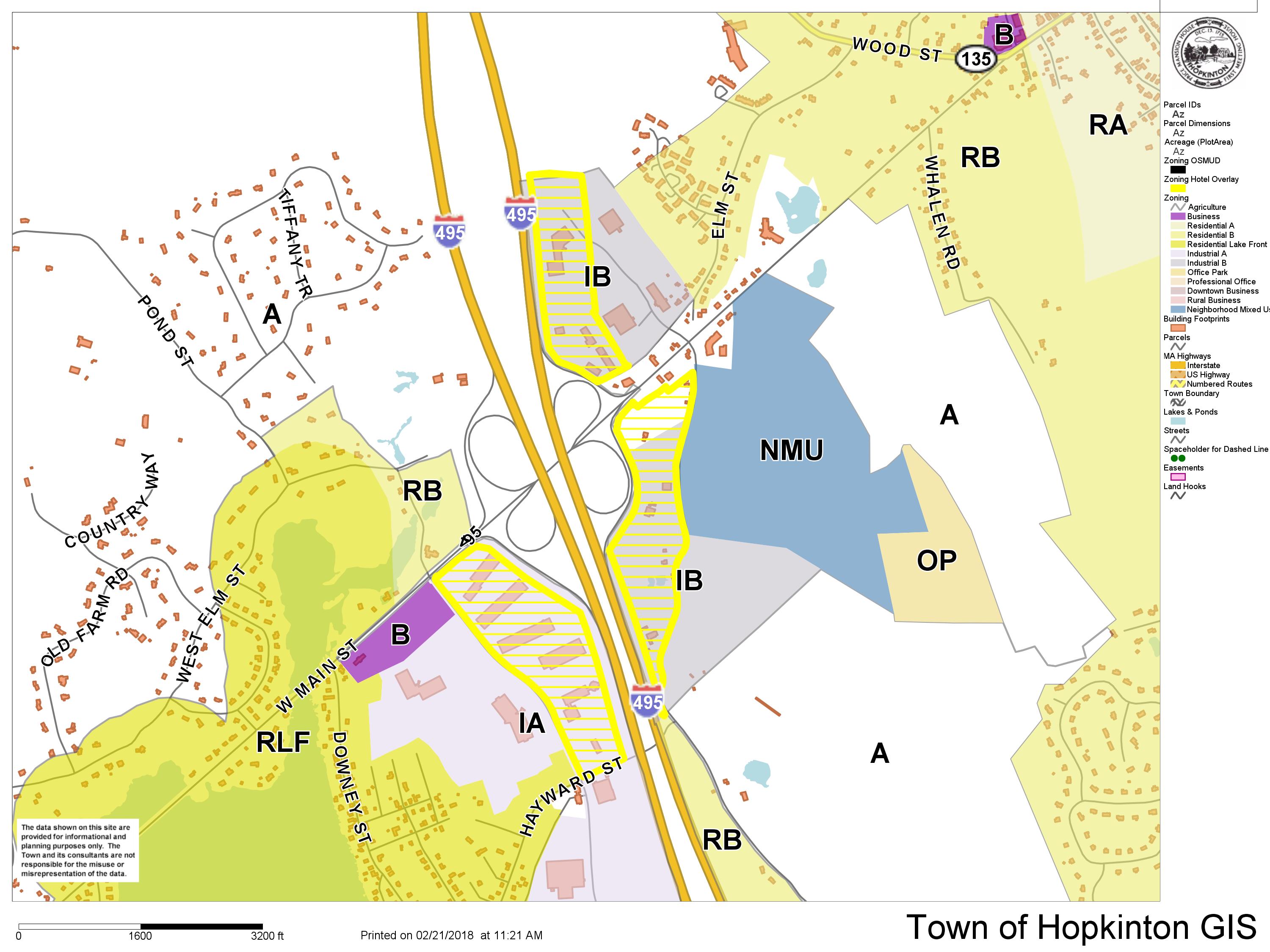Zoning Bylaw & Map Changes – Public Hearing 2/26

The Planning Board will hold a public hearing on Monday, Feb. 26, 2018 at 7:30 PM in the HCAM-TV Studio, 77 Main St., on several proposed changes to the Zoning Bylaw and Zoning Map. The following is a brief description of the proposed changes, most of which were recommended to the Board by the Zoning Advisory Committee (ZAC). ZAC membership this year consisted of 20 people, which held a public forum and several public meetings from October through December 2017, and reviewed, researched and debated several proposed changes to the Zoning Bylaw.
Amend Zoning Bylaw Section 210-125, Conversions of Residential Property.
The “Conversions” bylaw (adopted in 1991) currently allows the conversion of a single family home into up to 4 rental units by Special Permit. The Board of Appeals asked the ZAC to review this bylaw, specifically whether owner occupancy should be required and whether the maximum number of units should be changed. After discussion, the ZAC recommended that owner occupancy be required, and to reduce the maximum number of units to 2. The proposed amendment would make those changes.
Hotel Overlay District Area.
The Chamber of Commerce requested that the ZAC review the location of the Hotel Overlay District (HOD), in order to include areas that are viable for a hotel. The ZAC recommended expansion in two areas and a reduction in another, as noted below. As an “overlay” district, the HOD is overlays the underlying zoning district, which is either Industrial A or Industrial B, depending on location.
- The HOD would be expanded on South Street. Presently, #25 through #71, on the east side of South St. (i.e. between South St. and Rt. 495), are included in the District. The proposed expansion would include all of the land on the east side of South St. and all of the land on the west side of South St., except that land within 400 feet of a residential zoning district would be excluded.
- Expand the HOD to include land in the Elmwood Park/Parkwood Drive area. Presently, property within 500 feet of Rt. 495 in the Industrial B District off Elm St. and Parkwood Drive is included in the HOD. The proposed change would include additional land that is between the 500 ft. mark and Parkwood Drive, an addition of approximately 8.8 acres.
- Reduce the size of the HOD on Lumber Street. Four parcels totaling about 11.1 acres would be removed from the HOD.
Hotels would remain a use allowed by special permit, and there remains a maximum of one special permit that could be granted on each side of Rt. 495, for a maximum of 2 hotels that could be built with the HOD, regardless of its land area.
Maximum Height Terminology.
At the present time, the Zoning Bylaw refers to the maximum height in the Industrial A and B districts as x feet or x stories, whichever is less. The proposed change would remove the reference to the number of stories in order to alleviate confusion, recognize changes in building and infrastructure technology and to allow for interior design flexibility (large open spaces, lofts, mezzanines, etc.). If revised, the bylaw would regulate the maximum height of a building in feet only. The number of feet specified would not change – it is presently 45 feet in the Industrial B District and 60 feet within the Industrial A District (except within 400 feet of Hayward St., where the maximum height is 40 feet).
Maximum Height of Buildings in One Portion of Industrial B District.
This proposed change would increase the maximum height of buildings within a portion of the Industrial B District located in the Elm Street/Parkwood Drive area. It would apply to the portion within the Hotel Overlay District only (either in its current location or expanded as proposed above), and the increase would be from the current 45 feet to 60 feet. The ZAC recommended the change so as to allow for additional commercial development/redevelopment within this already developed area. This would allow more opportunities for buildings to go “up” rather than “out”, reducing impervious surface.
Accessory Family Dwelling Units.
Prompted by a request from the Board of Appeals, the ZAC has recommended significant changes to the accessory family dwelling unit bylaw. Sometimes called “accessory apartments”, these are separate but connected units in single family homes that can accommodate a family member or residents over 60. Presently, all such units require a special permit from the Board of Appeals. The proposed changes would establish two categories of units: 1) by right units, limited to a maximum of 800 sq. ft. located entirely within a single family home; 2) other units, such as one that is larger than 800 sq. ft. or located in a detached building for example, provided that units cannot exceed 1,000 sq. ft. or a third of the area of the single family home. The intent is to allow the small units by right that are routinely approved – it was felt that the strict scrutiny required of a special permit process is not required. The special permit process would be retained for those circumstances where greater scrutiny is needed.
Recreational Marijuana.
The proposed article would repeal the temporary moratorium on recreational marijuana establishments adopted at the 2017 annual town meeting, and replace it with a new zoning bylaw that prohibits all types of recreational marijuana establishments within the Town. This completes the process the Town has undertaken to prohibit the uses. The proposed bylaw does not affect medical marijuana facilities – such uses are presently allowed and will continue to be allowed.
Lighting:
The Planning Board proposes to regulate non-residential lighting that shines out of windows at night when businesses are closed, either through the site plan review process or by a bylaw that applies to all non-residential uses.
Conform to Changes in State Statute:
Two proposed articles would amend the Zoning Bylaw to conform to recent changes to the state Zoning Act:
- Special permits may be granted for up to 3 years. Previously, special permits could only be granted for a period of 2 years.
- Construction or operations undertaken pursuant to a building permit or special permit will be immune from subsequent changes in zoning requirements as long as they commence within one year of the permit’s issuance and, in the case of construction, continue through to completion.
Previously, immunity was available only if construction or operations were undertaken within 6 months.
Fine for Zoning Violations:
The statute allows municipalities to assess a penalty of not more than $300 per violation for zoning violations. Currently, the Zoning Bylaw lists a penalty of $100 per violation. The proposed amendment would allow the Town to take advantage of the statutory provision.
